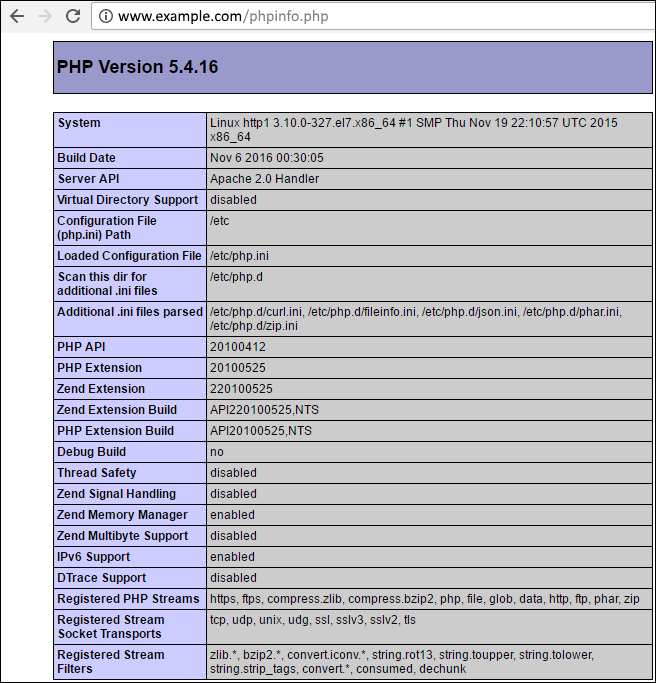
On a Red Hat distribution (CentOS, Fedora, Red Hat), the dnf install or yum install command can be used to install php-fpm.
dnf install php-fpm
If you are using an Nginx web server, add the following inside of the server block of the /etc/nginx/nginx.conf file.
location ~ \.php$ {
try_files $uri =404;
fastcgi_param SCRIPT_FILENAME $document_root$fastcgi_script_name;
fastcgi_pass 127.0.0.1:9000;
fastcgi_index index.php;
include fastcgi_params;
}
The ps command can be used to determine if your system is using init or systemd. If PID 1 is init, then you will use the service command. If PID 1 is systemd, then you will use the systemctl command.
If your system is using systemd, use the systemctl command to start and enable php-fpm.
systemctl enable php-fpm
systemctl start php-fpm
systemctl status php-fpm
If your system is using init, use the chkconfig and service commands to start and enable php-fpm.
chkconfig php-fpm on
service php-fpm start
service php-fpm status
Create the phpinfo.php file in the document root of your web server.
touch /var/www/html/phpinfo.php
Add the following to the phpinfo.php file.
<?php
phpinfo();
?>
Navigate to www.example.com/phpinfo.php, and the PHP info page should be displayed.

To serve index.php as one of your default documents, add index.php to the server block of your /etc/nginx/nginx.conf file. If you only want to server index.php as your default document, remove index.html.
. . .
server {
listen 80 default_server;
listen [::]:80 default_server;
server_name www.example.com;
root /usr/share/nginx/html;
index index.html index.php;
. . .
Did you find this article helpful?
If so, consider buying me a coffee over at 